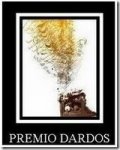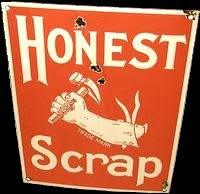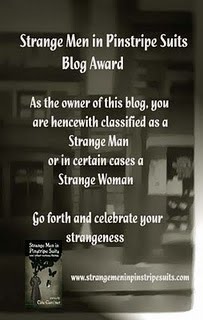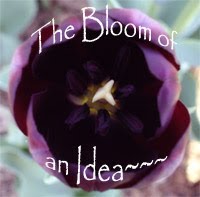
We interrupt this post for this important message :
My Hiroshima story has been chosen as one of the 5 finalists in Tessa's OUT OF THE BOX blogfest.
The voting is today. Her link for the voting is :
http://tessasblurb.blogspot.com/
Read my and the others entries. Vote for the one you like.
Of course, I'm hoping you vote for mine. But I'm prejudiced, and the other four are great writers.
Now, back to our regularly scheduled broadcast :
http://tessasblurb.blogspot.com/
Read my and the others entries. Vote for the one you like.
Of course, I'm hoping you vote for mine. But I'm prejudiced, and the other four are great writers.
Now, back to our regularly scheduled broadcast :
We've talked about the ending ...
about how the beginning is shaped by it.
Now, what Hostess bakeries already knows :
It's the middle that makes the product.
You like that creamy filling? Me, too.
It's what brings me back. The icing entices me. The devil's food cake is the taste pleaser at the end. But it's the filling that makes the cupcake.
The title and the hook of a first sentence will snare the reader.
But it is what lies between the beginning and the stunning end that will keep him turning the pages until he reaches that finely honed climax.
Have you ever heard a good joke told badly?
Sure. We all have.
Have you ever had an agent or her intern write that your tale did not hold together?
Now, what the heck does that mean?
It means you told a good joke slightly off focus.
Eric Trant had a good point in his comment yesterday.
You don't just slap some wood together and hope you come up with a table. You start with the proper measurements and a firm idea as to what kind of table you want to build.
Have you been told your tale doesn't hold together?
1.) Perhaps that's because the pieces don't fit properly.
When you build a table, you use wood that has already been planed and sanded smooth :
Try smoothing each page you write as you write it.
Look at it closely as you finish and edit it to the best of your ability at the moment. Start with the next page. Edit it.
At the end of the chapter, print that rascal out.
You will discover flaws and rough spots you never saw on the computer screeen.
Trust me. It works. I got the idea from that rookie, Dean, ah what was his last name? Oh, yes. Dean Kootnz.
2.) The end in sight is great, but listen to the characters.
Aim for the ending you planned. But if the characters twist in your hand and suggest a great new ending.
Listen.
It is your unconscious mind speaking.
The new ending will prove to be fresher and more novel than what you originally started out with.
And since it is more in keeping with the evolved characters in your book, your tale will feel more together, less patched together.
3.) Write hungry.
Always write, knowing you could do better.
Aim higher.
Try harder.
Settle for nothing but your best. Try to make yourself laugh, cry, be surprised at the twists the characters' evolving personalities take you.
4.) Write true.
Listen to your heart.
If the beautiful sentence you just wrote rings false for the story, for the character, for the ending, edit it out.
Save it for another novel. Or don't.
Never call attention to yourself :
Isn't this a grand piece of prose.
Always ask how can I draw the reader into the story to LIVE it not read it.
Hear the characters talk in your head.
You'll pull back occasionally and say, "Hey that doesn't sound like Jane. That sounds like me. Or it sounds like Eden."
If a character says something in your head that puzzles you, go with it. Keep writing.
Wait until the end of the chapter before going back and re-reading the whole thing. Your unconscious is handing you a great surprise for your readers.
If you don't immediately know what it means, neither will your reader.
Don't waste or throw away that gift.
Follow these points and your novel's middle will be more than creamy filling. It will be the meat and potatoes of your tale.
***
And in honor of this holiday season :
s


























































































































































































Wonderful points!
ReplyDeleteHopefully, my middle section has enough threads of mystery and suspense to keep the reader going to the end.
ReplyDeleteThere are several things going on: secrets hinted at, an antagonist revealed in tiny peeks, and an mc who's spiraling slowly into an abyss....
I haven't ever thought of a book as a meal, but you know what? That's probably the best analogy I've ever heard of! Sweet!
Love your writing advice!!
ReplyDeleteWhat I came to tell you...your hiroshima story entry to my blogontest is one of the 5 finalists!
Tessa.xx
More great tips. Thank you!
ReplyDeleteAlways so helpful Roland.
ReplyDeleteYou are so right. We all have read books that start of like gang busters, lull to the point of death in the center and if you manage to get to the end it's the best part of the book.
I agree a story needs balance. You want your reader to continue to the fantastic climax at the end.
You also have a wonderful way of simplifying writing techniques. I always walk away from your blog with a wonderful pearl of wisdom to incorporate into my writing.
Congrats on becoming a finalist on Tessa's blogfest. I'm not surprised.
Michael
This is excellent advice on strengthening the middle! We all want our novel to have rock hard abs! ;)
ReplyDeleteSuperb advice, Roland. To be honest, the middle of my first novel rocks. I changed the beginning to one of those trendy action opens that I abhor but agents and editors love. And I changed the ending, because readers insisted it be more "hopeful." But my middle? It's amazing, even if I do say so myself. :)
ReplyDeleteI'm off to visit Tessa…
Yep, my middles often sag. Am trying to avoid that this time around in my WIP, because it's easier/better to do it right the first go-round. Lots of good advice in here, like great lines being great, but if they don't fit your character, save 'em for another novel! I've had to slash some of those, reluctantly.
ReplyDeleteI did Nano and got 50000 this year. The story actually formed and came to a point (not quite the point I had planned but hey!) I'm currently resisting the temptation to start editing. I need to leave it at least a month to see it with a clear eye. But I'll be back here for a reminder when I get to it. Thanks.
ReplyDeleteI have to power through the middle and then fill it in the RIGHT WAY in the rewriting process (like that creamy filling--really goes in last). And that sand and polish have to come at the end, too. You know what gets it even smoother than reading a hard copy? reading a hard copy OUT LOUD. For reals. Really helps spot things like: are my sentence lengths pleasingly varied? Have I run on too long? and, Does this dialog ring true?
ReplyDeleteCongrats on the finalists!
ReplyDeleteSo right about hard copy. I find so many more mistakes that way.
I'm off to Tessa's.
I definitely agree that you see mistakes in a printed piece of writing far more easily than you do on screen. Some great points here. Please take a look at the contest over at my blog for a chance to win books and other goodies!
ReplyDelete